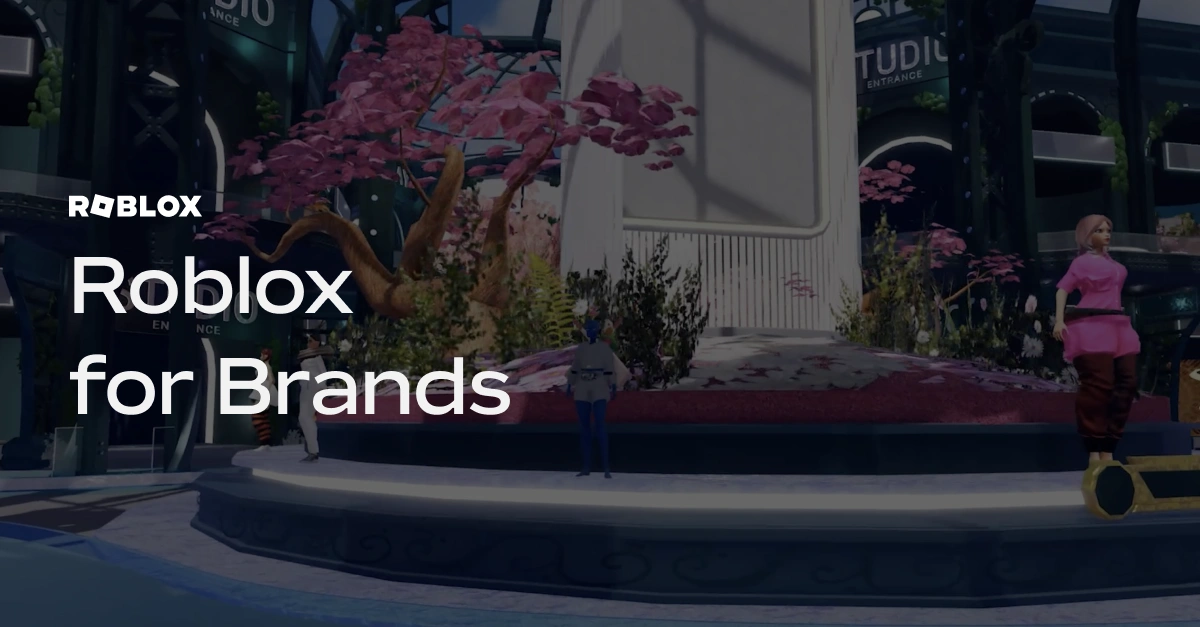- Today in Digital Marketing
- Posts
- Meet Your Brand's Deepfake Salesperson
Meet Your Brand's Deepfake Salesperson
Soon, AI influencers will sell your product on livestreams and interact live with viewers. And TikTok wants to be the first to offer it.
by Tod Maffin (LinkedIn • social media) |

Today's News
Join the Essential Community For Marketers
Stay ahead of the curve and join the thousands of marketers shaping the future of marketing with the American Marketing Association. As the largest community-based marketing organization, you’ll find award-winning content, professional certifications (PCM®), industry-leading training events, and vibrant local chapters. Members get access to an abundance of resources, on-demand courses, and the most essential community in marketing.
TIKTOK • Meet Your Brand’s Deepfake Salesperson

I think we all knew this was coming, eventually.
Reports say TikTok is working on an app that would let brands design their own deepfake AI video avatar, that could be turned loose on the platform to sell products in livestreams and videos.
The feature, which is still under development, would generate a script for a video ad based on a prompt submitted by the advertiser, as well as an AI-generated influencer to perform in the video, according to an advertiser who has seen plans for the tool.
TikTok Shop merchants could also use the AI influencer tool to promote their goods, said two other people told about the idea by TikTok staff.
TikTok’s Chinese cousin-app, Douyin, has used virtual influencers for a couple of years now — some of which have become famous in their own rights — selling hundreds of thousands of dollars of merchandise a day.
Not bad, for someone whose wardrobe and look you can change at an instant, and don’t have to pay.

Virtual influencers on Douyin
Now, all the human workers have to do is input basic information such as the name and price of the product being sold, proofread the generated script, and watch the digital influencer go live.
A more advanced version of the technology can spot live comments and find matching answers in its database to answer in real time, so it looks as if the AI streamer is actively communicating with the audience. It can even adjust its marketing strategy based on the number of viewers.
And sure, you can probably spot artifacting and other things that give away the fact that they’re not real, but that’s not the point. The people watching and buying from these deepfakes also know they’re artificial. They don’t care.
Livestreams on Douyin are now the app’s biggest revenue driver, and TikTok wants a slice of that too. Although its recent attempts at livestreamed commerce have, at best, been received lukewarmly by western audiences. That’s true not just for TikTok but for Meta and other platforms that have toyed with it.
In a way, it’s similar to the WeChat thing — WeChat is the Chinese app that people there rely on for absolutely everything, from news to banking to entertainment to messaging. Many western platforms have tried to copy it. Elon Musk is obsessed with the idea — that’s part of why he bought Twitter in the first place.
But, like livestreamed commerce, those attempts so far have failed in the western world.
Even so, the revenue potential is tantalizing. Last year, TikTok made $3.8 billion from consumer spend in the app. Douyin made $270 billion.
RELATED:
Today’s Trivia — Guess and Win!
Each month, we pick someone who guesses in a trivia question and comp them the Premium Newsletter! Just click on any option below:
Which slogan did Douyin adopt in its 2018 rebranding effort? |
META • The Current State, and How Testing Helps

Every Friday, we check in with our Meta Ads correspondent Andrew Foxwell. Andrew has visibility into $300 million dollars in Meta ad spend through his Slack community called Foxwell Founders.¹
This week, Andrew and Tod discuss the recent downturn in Meta ad results, what media buyers are doing for testing these days, and more.
Be sure to check out Andrew’s Foxwell Founders community of digital ad buyers and his extensive training in the digital ad space.¹
BRAND SAFETY • TikTok Adds New Exclusions

TikTok also this week announced some stronger brand safety controls for advertisers. Specifically, Category Exclusion and Vertical Sensitivity controls.
Category Exclusion will let brands tell the ad platform to keep their content away from content about:
Gambling and lotteries
Violent video games
Combat sports
Youth content
Vertical Sensitivity is a deeper level of control.
Advertisers can utilize this feature to choose their industry vertical and avoid content related to that vertical that they deem incompatible with their brand positioning, providing an extra layer of brand protection.
For instance, a travel brand that typically focuses on nature-themed content may opt out of appearing alongside content about volcanoes or floods.
Those verticals are:
Pets | Financial Services |
Also, they’re moving account-level controls for all their brand safety tools to be within their Ads Manager.
And they also announced partnerships with DoubleVerify (DV), Integral Ad Science (IAS), and Zefr to provide post-campaign measurement of these new controls.
|
COMMERCE • 4 of 10 Americans Have Used BNPL

One of the big trends in commerce over the last couple of years has been the emergence of Buy Now Pay Later services. Financial brands like Affirm, AfterPay, and Klarna offer online sellers the ability to split the customers’ payments up into installments, usually interest-free.
It’s been a couple of years now — how has the adoption been?
According to a new Bankrate and YouGov survey, 39% of U.S. adults said they have used at least one BNPL service.
Of the consumers who used BNPL, half did so to spread their cash flow, and 37% used the service to take advantage of low or no interest rates.
Only 20% of respondents cited retailer promotions as their reason for using the tool…
Fifty-six percent of people who used BNPL encountered at least one problem while using the service.
Overspending (29%), missing a payment (18%) and difficulty returning products or getting a refund (18%) were the top problems reported.
By generation, the younger a person is, the more likely they are to use a BNPL service. 55% of Millennials are in the top spot; Boomers are at the bottom at 25%.
A recent Adobe report estimated nearly $17 billion was spent through BNPL last year; that was 14% higher than the previous year.
|
GEN Z • Roblox Selling Virtual Billboards Programmatically

The popular online game platform Roblox has signed with PubMatic to let advertisers buy ads programmatically on their platform.
A Roblox spokesperson told us today the ads appear in the various immersive experiences that are created by users.
For now, they’re static images on places like billboards; later in the year advertisers will be able to upload videos for those placements.
The ads appear in virtual worlds that are designed by the Roblox community, and designers will get a share of the ad revenue when people visit their world. Indeed, Roblox is less a game on its own, and more a social platform that contains thousands of games and worlds.
This is the same model used by another wildly popular multiplayer game — Fortnite — where people can design worlds, and establish buildings and rules for how things like gravity work. Only in Fortnite, so far the only advertising is from bespoke big-name and big-budget brand deals.
Roblox says it has more than 70 million daily active users, more than half are in Gen Z which are between 12 and 27.
Last month, the company launched its ‘Roblox for Brands’ website, which provides more information about their ad capabilities.
AMAZON • Toning Down “Our Products First” Search

Amazon got into heat recently after researchers said the site favoured its own private-label ads in search results.
Now, that seems to have been at least partially addressed, after the European Union applied new rules to the company.
[Researchers at the University of Minnesota found that] after the EU's designation of Amazon as a 'gatekeeper' platform, the rank of Amazon products in Amazon search results [compared to competing brands] changed substantially: the Amazon rank differential fell from a 30, to a 20 rank advantage, while other brands' search ranks did not change…
[Researchers noted] that the rank differential can't be definitively attributed to self-preferencing. Other factors like differences in product quality come into play.
Amazon did not respond to media requests for comment.
WORDPRESS • Predictive Plugin = Faster Site?

WordPress this week released a new plugin it says can dramatically speed up your brand’s web site.
The plugin is called Speculation Loading.
The idea is that the site would take its best guess as to what link any given user will click next, and will pre-render that web page — Javascript and all — while the user is still looking at the previous page. Then, if they do indeed click the predicted link, the web site can bring up that web page almost instantly, because it was already preloaded in the browser.
As for how they’re taking that educated guess — mostly, it’s if a user hovers their cursor over that link.
This has been tried before, but with more of a brute-force method. Many caching plugins and some web browsers will cache the first link of search results, for instance, assuming that’s where the user will click next. If they click something else, it just throws out what it pre-loaded.
When you install the plugin, it will by default start pre-fetching other pages on your site — specifically pages, posts, and archive pages. You can adjust the settings under Settings > Reading > Speculative Loading.
Need more detail?
Read more about the stories we covered today.
Upgrade Your Media Buying Skills: | Tools We Use and Recommend: |
Get free stuff for referring friends and family 🎁
1 referral = Tod’s “How to Go Viral” keynote speech 🗣️
2 referrals = One Month Free of the Premium Podcast 🎙️
3 referrals = Access to Private Slack Channel 🔓
You currently have 0 referrals, only 1 away from receiving Tod's Keynote: "How to Go Viral".
Copy and share ⇨ this link ⇦
¹ Some links in this newsletter may provide affiliate revenue to us.






Reply